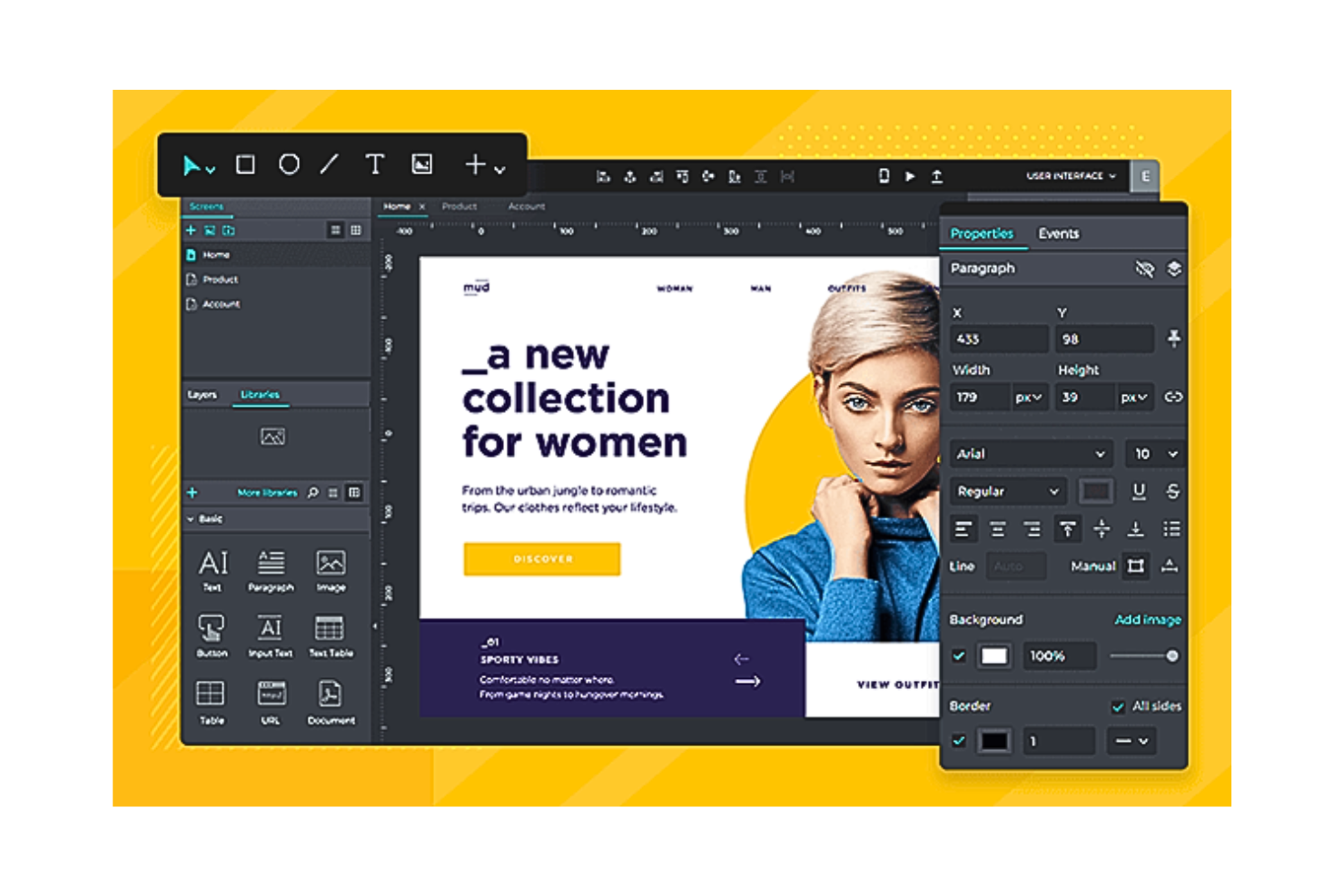Opening the Keys to Remarkable Web Design for Your Service
Opening the Keys to Remarkable Web Design for Your Service
Blog Article
A Detailed Overview of the Finest Practices in Website Design for Developing Instinctive and Navigable Online Systems
The effectiveness of an online system hinges dramatically on its design, which have to not only attract individuals but additionally lead them seamlessly via their experience. Recognizing these concepts is crucial for programmers and designers alike, as they straight impact individual fulfillment and retention.
Recognizing Customer Experience
Comprehending individual experience (UX) is pivotal in website design, as it straight affects exactly how site visitors connect with a web site. A well-designed UX ensures that individuals can navigate a site intuitively, gain access to the details they seek, and complete wanted activities, such as authorizing or making an acquisition up for a newsletter.
Crucial element of reliable UX layout consist of functionality, availability, and visual appeals. Functionality concentrates on the ease with which customers can accomplish tasks on the web site. This can be accomplished via clear navigation frameworks, logical web content organization, and responsive responses devices. Accessibility makes certain that all customers, including those with handicaps, can communicate with the site successfully. This involves adhering to established standards, such as the Web Web Content Availability Standards (WCAG)
Aesthetic appeals play a critical duty in UX, as visually appealing layouts can improve customer satisfaction and interaction. Color design, typography, and images should be attentively chosen to create a cohesive brand identification while additionally helping with readability and understanding.
Ultimately, focusing on customer experience in website design fosters better user complete satisfaction, motivates repeat visits, and can significantly improve conversion rates, making it an essential element of effective electronic methods.
Value of Responsive Design
Responsive design is a crucial part of modern-day web advancement, guaranteeing that sites offer an optimum viewing experience across a wide variety of devices, from desktop computers to smart devices. As user habits progressively shifts in the direction of mobile surfing, the demand for sites to adapt perfectly to numerous screen sizes has ended up being extremely important - web design. This versatility not only improves usability yet additionally considerably impacts customer involvement and retention
A receptive design uses fluid grids, adaptable images, and media inquiries, enabling a natural experience that preserves performance and visual integrity no matter tool. This strategy removes the demand for users to zoom in or scroll flat, causing a more user-friendly interaction with the material.
Additionally, internet search engine, significantly Google, prioritize mobile-friendly websites in their rankings, making receptive design crucial for maintaining exposure and availability. By taking on responsive design concepts, companies can get to a wider target market and improve conversion rates, as individuals are more probable to involve with a site that uses a constant and smooth experience. Inevitably, responsive layout is not just an aesthetic option; it is a calculated requirement that shows a commitment to user-centered design in today's electronic landscape.
Simplifying Navigation Structures

Making use of an ordered framework can considerably improve navigating; key classifications should be easily accessible, while subcategories must realistically comply with. Consideration of a "three-click regulation," where users can reach any page within 3 clicks, is useful in keeping navigation intuitive.
Incorporating a search function better improves usability, allowing customers to situate material straight. web design. Furthermore, carrying out breadcrumb tracks can offer individuals with context about their area within the website, advertising ease of navigation
Mobile optimization is an additional vital aspect; navigating should be touch-friendly, with clearly defined switches and web links to suit smaller sized screens. By lessening the number of clicks required to access web content and guaranteeing that navigating corresponds throughout all pages, developers can develop a smooth user why not find out more experience that encourages expedition and reduces aggravation.
Focusing On Availability Specifications
About 15% of the worldwide population experiences some form of special needs, making it crucial for internet designers to prioritize ease of access criteria in their jobs. Ease of access encompasses numerous aspects, including visual, acoustic, cognitive, and motor impairments. By sticking to developed guidelines, such as the Internet Material Access Standards (WCAG), designers can create comprehensive electronic experiences that satisfy all individuals.
One essential method is to make certain that all material is perceivable. This includes giving alternative message for photos and making certain that videos have transcripts or captions. Key-board navigability is essential, as many users depend on keyboard faster ways rather than computer mouse interactions.
In addition, color contrast ought to be very carefully considered to suit people with aesthetic disabilities, making sure that message is legible versus its history. When making forms, tags and mistake messages should be descriptive and clear to help users in completing jobs effectively.
Lastly, carrying out use screening with individuals that have impairments can offer vital insights. By focusing on access, internet developers not just adhere to lawful requirements but additionally broaden their audience reach, promoting an extra inclusive online atmosphere. This commitment to official site availability is important for a easy to use and genuinely accessible internet experience.
Utilizing Visual Power Structure
Clarity in design is extremely important, and utilizing aesthetic power structure plays an essential role in attaining it. Visual power structure describes the arrangement and presentation of aspects in a manner that clearly suggests their importance and guides user focus. By tactically utilizing dimension, spacing, shade, and comparison, designers can develop an all-natural circulation that guides individuals via the web content seamlessly.
Using larger fonts for headings and smaller ones for body message develops a clear distinction between sections. In addition, using contrasting histories or vibrant colors can attract attention to essential info, such as call-to-action switches. White room is just as vital; it helps to avoid clutter and permits users to concentrate on the most important aspects, enhancing readability and overall customer experience.
Another key element of try this web-site aesthetic pecking order is using images. Pertinent images can boost understanding and retention of information while also breaking up text to make material much more absorbable. Ultimately, a well-executed aesthetic hierarchy not just boosts navigation however likewise fosters an user-friendly communication with the site, making it more probable for users to achieve their purposes effectively.

Final Thought
Additionally, the effective use of aesthetic hierarchy improves customer involvement and readability. By prioritizing these elements, web developers can significantly boost user experience, making sure that on the internet platforms fulfill the varied demands of all individuals while helping with effective interaction and fulfillment.
The effectiveness of an online platform hinges significantly on its style, which need to not just bring in individuals however additionally assist them flawlessly through their experience. By adopting responsive design principles, companies can get to a broader target market and boost conversion prices, as customers are much more likely to involve with a site that uses a constant and smooth experience. By adhering to established standards, such as the Web Web Content Availability Standards (WCAG), designers can produce comprehensive electronic experiences that provide to all customers.
White space is equally necessary; it aids to stay clear of mess and allows users to concentrate on the most vital elements, improving readability and general user experience.
By prioritizing these elements, web designers can considerably improve user experience, making certain that online platforms fulfill the varied requirements of all customers while assisting in effective interaction and fulfillment.
Report this page